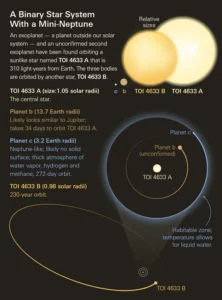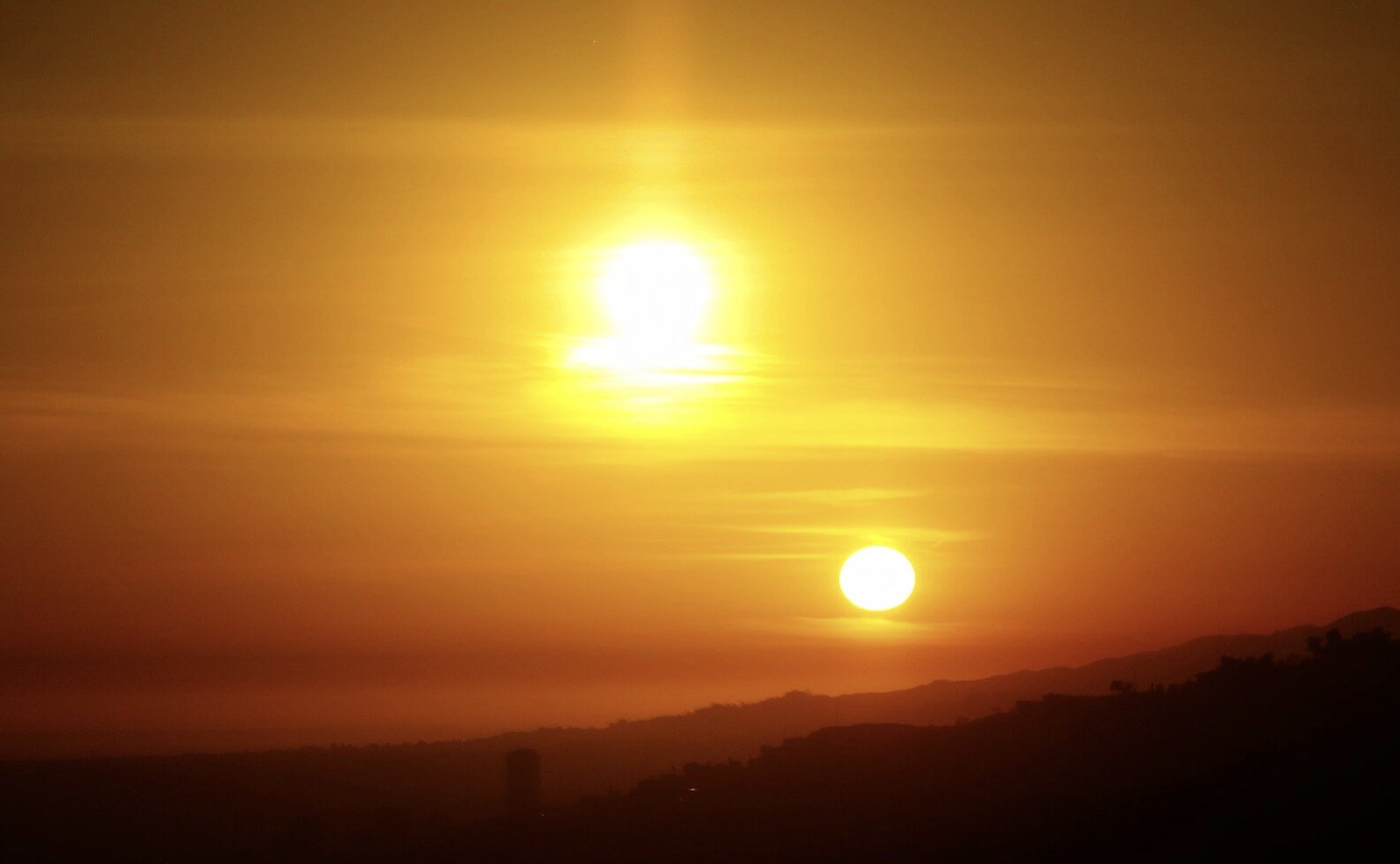A team of astronomers and citizen scientists have announced the discovery of a Tatooine-style planet like Luke Skywalker’s home world in the movie Star Wars. Officially named TOI 4633 c, but nicknamed Percival for a character from the “Harry Potter” book series, the planet is likely in the star’s habitable zone, meaning it could theoretically support liquid water on its surface. For astrobiologists searching for signs of life outside of Earth, the presence of water is considered a key factor since virtually all life forms we know of depend on water.
The researchers also say their initial readings from this Neptune-sized planet indicate the possible presence of a second planet sharing its orbit. Future observations are planned to confirm the original planet’s size, location and orbit, and should also confirm or deny the second planet’s existence.
Notably, the discovery was aided by a citizen scientist who was searching through the archives of NASA’s Transiting Exoplanet Survey Satellite (TESS). Known as the Planet Hunters TESS Program, it’s an effort that lets anyone with a computer and an internet connection sift through the massive amounts of data collected by TESS for the presence of planets outside of our solar system.


According to Simon Bentzen, the citizen scientist behind this latest discovery, actually finding a proverbial needle in an interstellar haystack was extremely exciting.
“Every time I spot a possible transit, I can feel my heart beat faster, and my excitement rise extensively,” explained Bentzen, who has volunteered with Planet Hunters TESS since 2018. “I’m very happy that I helped find the new system. I hope that the new planets can help contribute to our understanding of planet formation and help answer other interesting planetary questions.”
Since TESS launched it 2018, it has continued to circle the Earth twice a day. During these extended orbits, it continually captures spectral data from the entire sky. Separated into 26 distinct sections, this data is too much for project astronomers to search through. Fortunately, as a result of the Planet Hunters program, their efforts have been assisted by over 43,000 volunteers from 90 countries who can comb through the data at home. The thousands of volunteers have not only helped catalog over 25 million cosmic objects, but finding longer orbit planets like the Tatooine-style planet found by Betzen has proven to be their specialty.
“The human brain has a really incredible ability to recognize patterns and to filter out noise,” explained study lead author Nora Eisner, a research fellow at the Flatiron Institute’s Center for Computational Astrophysics and the principal investigator of Planet Hunters TESS. “While our algorithms struggle to identify these longer-period planets, the citizen scientists don’t.”
In the case of TOI 4633 c, the planet orbits its host star every 272 days. If confirmed, this would make it the second longest orbit for any planet discovered by TESS and only one of five with orbits longer than 100 days. Although a longer orbital period does not necessarily improve the chances of a planet supporting life, most planets found by the transit method, such as this one, are much closer to their hosts and, therefore, likely to receive much more radiation and heat from the host.
“This planet is remarkable in many aspects,” Eisner says. “It’s remarkable in its orbit, it’s remarkable for being in the habitable zone and it’s remarkable for orbiting a bright star.”
Still, the researchers behind this historic find caution that the planet is unlikely to harbor any life as we know it. It has no solid surface, and the atmosphere is probably thick with water vapor, hydrogen, and methane. However, they do note that previous research has indicated that larger planets like TOI 4633 c are more likely to have rocky exomoons that could provide a suitable environment for burgeoning life forms.
“If this planet were to have a moon, that moon would likely have a solid surface, which could then be a great place to find water,” Eisner explained. Toward that end, the researcher says their newly discovered planet could be part of future studies looking for planets hosting moons.
Moving forward, the researchers say that it will likely be 30 more years before the two stars in the binary system are far apart enough for astronomers to determine the exact layout of the system. Ultimately, the team feels that this system has much to offer, including opening the door to a better understanding of how a Tatooine-style planet with its two suns could come into formation
“If we were able to constrain where the planets orbit, it would really offer a stepping stone to open up our understanding of exoplanet formation,” Eisner says. “It could also possibly help us someday be able to look at a star and its properties and make some guesses about what planets are potentially orbiting in that system.”
Christopher Plain is a Science Fiction and Fantasy novelist and Head Science Writer at The Debrief. Follow and connect with him on X, learn about his books at plainfiction.com, or email him directly at christopher@thedebrief.org.

